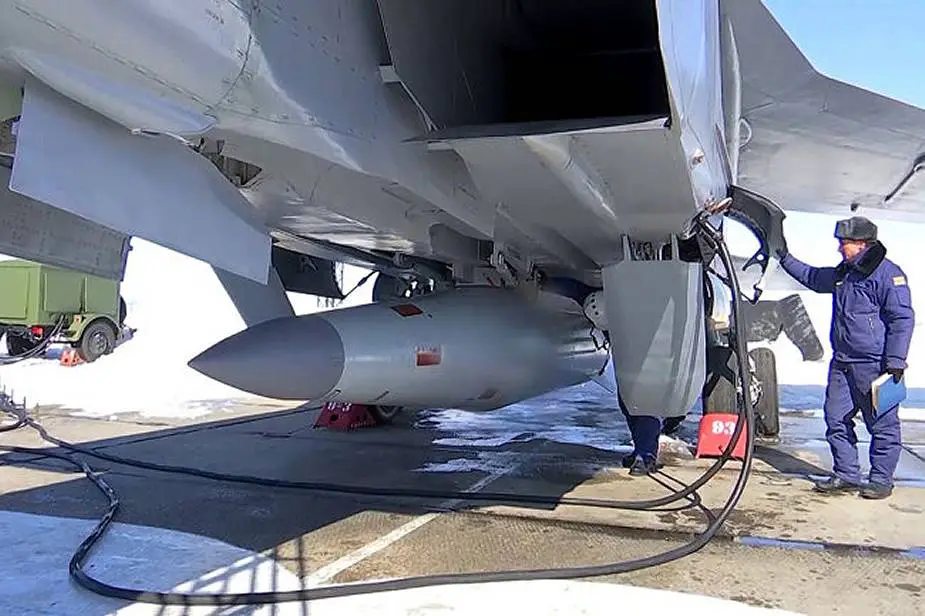During the recent aerial attacks against Ukrainian territory, the Russian armed forces have used the latest generation of Kh-47 Kinzhal hypersonic missiles as well as Kh-22 anti-ship missiles that the Ukrainian air defense forces were not able to intercept due to the latest technologies used by these missiles.
Follow Army Recognition on Google News at this link

The Kh-47 Kinzhal is a Russian-made hypersonic missile that can travel at speeds of Mach 10 or higher, making it very difficult to intercept. (Picture source Russian social network)
According to Ukrainian media, in the past few days, Russian forces have fired 28 Kh-101 and Kh-555 air-launched cruise missiles, 20 Kalibr sea-launched cruise missiles, 13 S-300 surface-to-air missiles, eight Kh-31P and 6 –Kh-59 guided missiles, six Kh-47 Kinzhal missiles, and six Kh-22 missiles
Due to this new technology of missile, the Ukrainian air defense units were not able to intercept Kh-47 Kinzhal hypersonic missile. Indeed, hypersonic missiles can travel at speeds greater than Mach 5, or five times the speed of sound. This technology uses advanced propulsion systems, such as scramjet engines, and innovative materials that can withstand the extreme temperatures generated during hypersonic flight.
Hypersonic missiles are generally more difficult to intercept compared to traditional missiles due to their high speed, maneuverability, and low-altitude flight capabilities. Hypersonic missiles can travel at speeds of Mach 5 or higher, which makes it very challenging for most existing missile defense systems to intercept them. Additionally, their maneuverability and ability to fly at low altitudes make it harder for radars and other tracking systems to detect and track them. Therefore, the development of effective defense systems against hypersonic missiles is a significant challenge for military forces around the world.
The Kh-47 Kinzhal is a Russian air-launched ballistic missile designed to be launched from a modified MiG-31 aircraft. Development of the missile began in the early 2000s and was tested successfully in March 2018. It is a hypersonic missile, which can travel at speeds of Mach 10 or higher, making it very difficult to intercept.
The Kh-47 missile is designed to carry a conventional or nuclear payload. It has an estimated range of over 2,000 km. This range allows the missile to be launched from a distance and still hit targets that are located far away. It is considered a significant advancement in Russian missile technology and is believed to pose a threat to enemy aircraft carriers, naval vessels, and military bases.
The Kh-47 is considered a stealth missile, indeed, it is designed to have a low radar cross-section, making it difficult for enemy radars to detect it. The missile is also highly maneuverable, which makes it difficult to intercept.
The Kh-47 missile's body is made of advanced composite materials that can withstand the extreme temperatures generated during hypersonic flight. The missile's body is made of advanced composite materials that can withstand the extreme temperatures generated during hypersonic flight.















